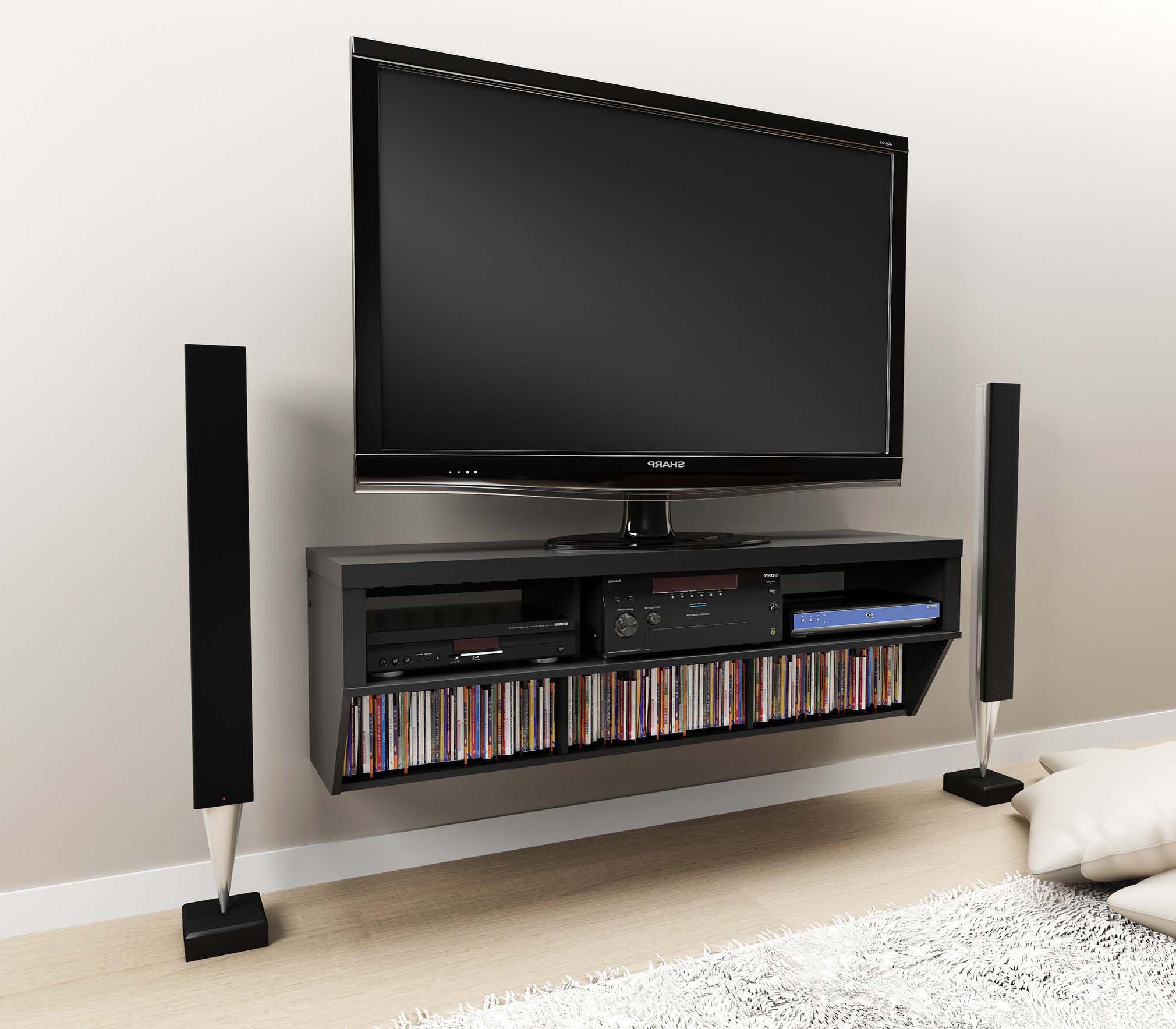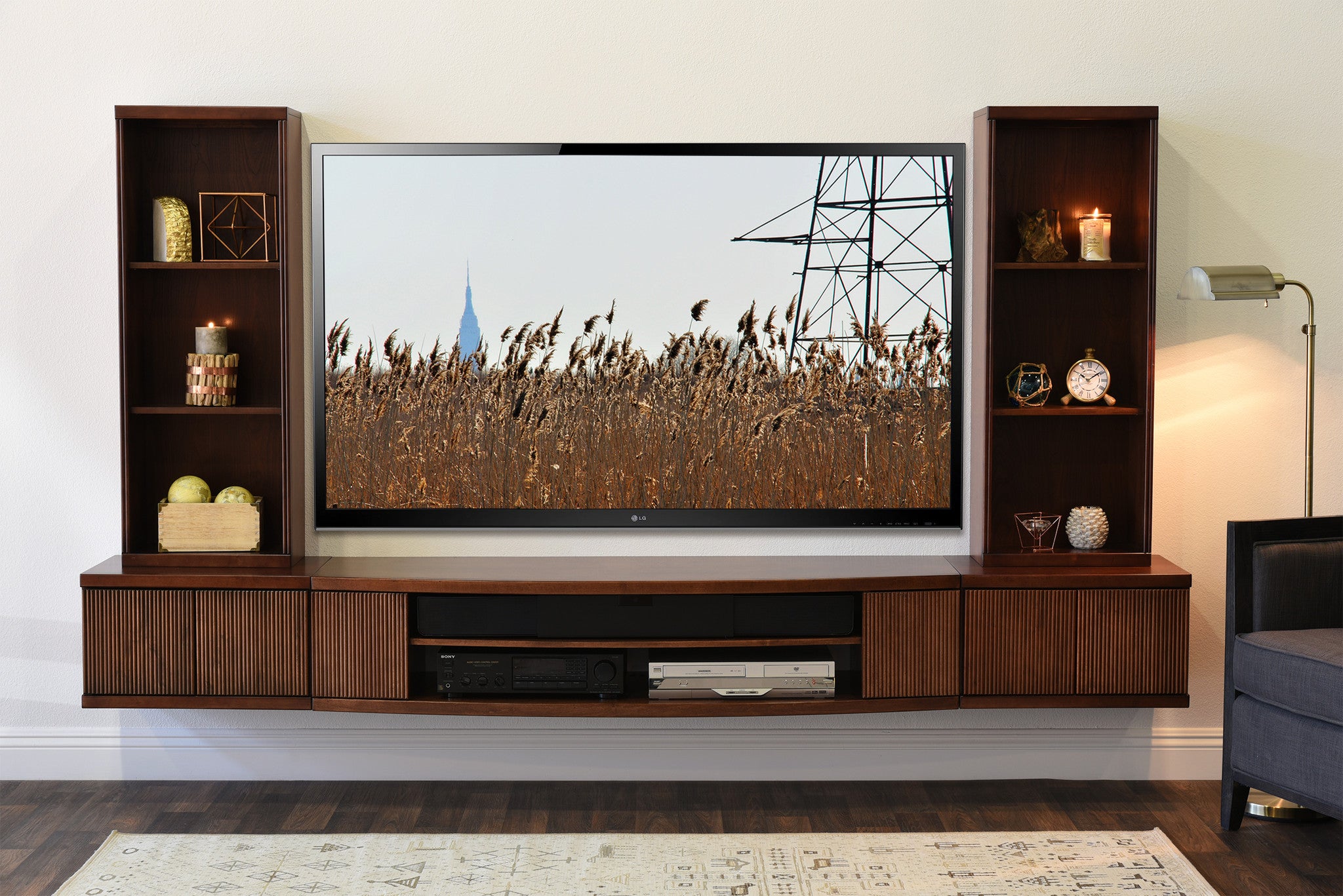
#Tv stands in wall plus
Measure and cut the side pieces to the height of the bifold doors plus ¼ inch, to allow for a ⅛-inch gap at the top and bottom so that the doors can swing without binding. Using a miter saw, cut the top and bottom frame pieces to length. Add 1½ inches for the thickness of the two side boards (3/4-inch each) and, depending on the overall size and look you're going for, about 6 to 8 inches for an overhang on either side. Lay the doors flat on the work surface with a ⅛-inch gap between them, and measure the width. Step 4: Cut the Frame Pieces Photo by Ryan Benyi
#Tv stands in wall tv
Once the hinges are installed, you should have two bifold doors with the knuckles on the TV side of the doors. Drill pilot holes and screw the hinges in place. Mark the edges of the doors where the hinges will be installed so that the knuckles sit 4 inches in from the top and bottom. Hold two panels back-to-back and on edge, as shown. Step 3: Attach the Hinges Photo by Ryan Benyi Cut along the lines to create the four panels of equal height that will make two bifold doors. Set your circular saw blade on the line and place a Speed Square next to the saw's shoe to get started on a true 90-degree bearing. Step 2: Cut the Door Panels Photo by Ryan Benyi

Using a combination square, mark the cut lines on the rails to create four equal-height panels with a rail at the top and bottom of each.


Remove the hinges and lay the door halves side by side and facedown. You'll cut the tall door in half to get two shorter ones that will go side by side to cover the horizontal TV. Step 1: Mark the Bifold Door Photo by Ryan Benyi 1x4 crosspiece Cut one to the inside width of the frame.1x4 cleat Cut one to the inside width of the frame, then rip it in half with a 45-degree angle down its entire length.1x sides Cut two to the height of the cut doors plus ¼inch.Then rip the front and side edges at a 45-degree angle. 1x top and bottom Cut two to the width of the assembled doors plus ⅛inch for the gap between the two, and add 6 to 8 inches for an overhang on either side.Bifold door Cut the two panels to equal height, leaving a rail at the top and bottom of each.At this size, make sure to choose a door with panels tall enough to cover the height of your TV. Larger TVs will likely require a 30- or 36-inch bifold door. Depending on the thickness of the TV's frame, that may fit up to a 46-inch TV again, you have to measure. The doubled width of the door should be at least several inches wider than the TV.įor example, a 24-inch bifold door will create a cabinet approximately 48 inches wide (not counting ⅛-inch gaps between panels). To find the right size for your TV, double the width of the door and compare it to the actual width of the TV. Doors are sold by width, including both panels, and come in stock sizes-typically 24, 30, or 36 inches. So before you select a bifold door, first measure the actual width of your TV.Ī bifold door consists of two panels joined by a bifold hinge. Since televisions are measured on the diagonal, screen size doesn't tell you anything. Display Coffee Table Overview Illustration by Doug Adams With a simple frame and doors cut down from a single bifold closet door, this cabinet is easy to assemble and costs far less than its store-bought counterparts.

#Tv stands in wall install
Or you could install it front and center, and cleverly conceal it behind a handsome cabinet fitted with bifold doors, as we did here. You could, of course, hide your mammoth monitor in the den or basement. A large flat-screen television is a must for the big game, but a large black blank space on your wall isn't quite so captivating during dinner parties.


 0 kommentar(er)
0 kommentar(er)
